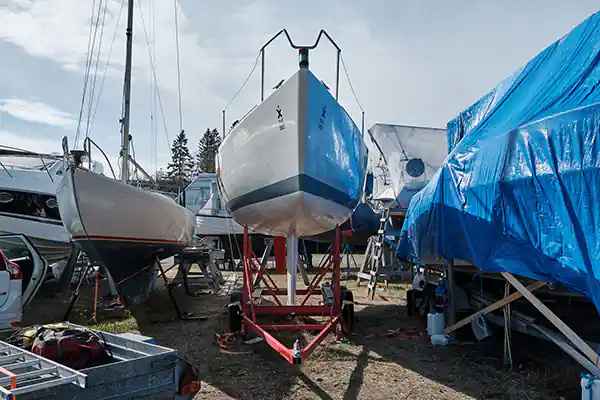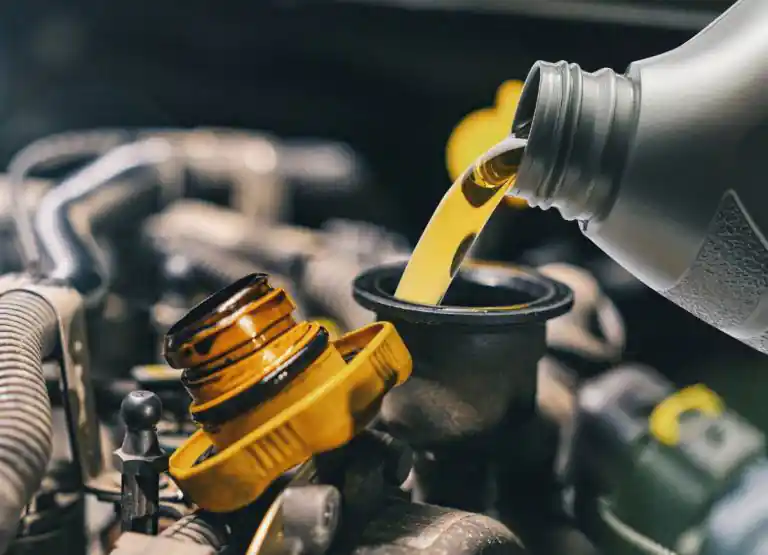5 secrets to preparing the sale of your used boat
Thinking about selling your boat but don’t know where to start? Don’t panic, we’re here to point you in the right direction! Selling a used boat can be a daunting task. But with the right information and careful preparation, you’ll be able to sell your boat at the best price.
Let’s take a look at the most important factors to consider for a successful sale. First, let’s focus on the overall condition of the boat, covering the hull, deck, equipment, and accessories. We’ll also discuss maintenance, the engine and electrical system, as well as the sails and riggingAll the spars (masts, booms, yards), cables and ropes needed to hold and maneuver the sails. More. Finally, we’ll analyze the boat’s history, including maintenance and repair history, as well as ownership and usage history.
With this information, you will be able to prepare your boat for a successful sale on the used boat market. It will then be ready for a survey and appraisal, if requested by the buyer. So, are you ready to sell your boat at the best possible price?

The basics: the hull and deck
If you are considering selling your used boat, its overall condition is a crucial factor to consider in order to maximize its value. To begin with, pay particular attention to the hull and deck of the boat. To maximize its value, make sure they are in good condition: look for and treat signs of wear and tear, such as cracks, scratches, and dents. Also check the condition of the paint and gelcoat.
Don’t forget to regularly check the seals around portholes and panels, doors, and hatches. They can become loose or cracked over time and may need to be replaced.
To keep your boat in good condition, it is also crucial to clean and maintain it regularly. Wash the hull and deck regularly and, depending on your local conditions, take precautions to protect your boat from the elements (sunlight, wind, frost…). Discoloration on the hull and deck can be unsightly. But a thorough cleaning or appropriate treatment can help remove stubborn stains and restore your boat’s value.
To improve the appearance and value of your boat, consider polishing the hull and deck to give them a shiny finish.
Power: engine and electrical system
When potential buyers inspect your boat, the engine and electrical system are often the most important elements they examine. Therefore, regular maintenance and inspection of these systems can have a significant impact on the resale value of your boat.
To assess the overall condition of your engine, first identify its age, model, and output rating. Next, the engine’s operating hours will have the most significant impact on its resale value. Finally, maintenance history is crucial. Potential buyers often prefer boats with engines that have been dutifully maintained and have fewer running hours.
Elements such as the condition of the alternator, starter motor, seawater pumps, and drive belt are very important to ensure that your engine runs smoothly. You should regularly check and replace fluids such as oil and coolant to keep your engine in top condition. A compression test may give you an idea of how worn your engine is.
When it comes to the electrical system, it is essential to check the batteries, chargers, inverters, cables, and connections to ensure that everything is working properly. Electrical problems can lead to high repair costs, as well as potential safety issues. The presence of a battery monitor can help to demonstrate the condition of the battery.
Potential buyers often prefer boats that have been well maintained and have systems in perfect working order.

For sailboats: sails and rigging
Is your boat a sailboat? Take care of your sails and riggingAll the spars (masts, booms, yards), cables and ropes needed to hold and maneuver the sails. More to extend their life and increase the resale value of your boat.
First, clean your sails regularly and store them properly to prevent dirt and moisture from accumulating and stains and mold from forming. Use a cleaner specifically designed for sails and follow the manufacturer’s instructions. Tip: use a lazy bag to help protect your sails from UV rays. Note that fully battened mainsails flap less and therefore wear less quickly. Similarly, on furling headsails, UV strips should be checked and replaced regularly to protect the sail when not in use.
Next, inspect your riggingAll the spars (masts, booms, yards), cables and ropes needed to hold and maneuver the sails. More regularly for signs of wear or corrosion. Check cables, turnbuckles, and chain plates, and if you detect a failure, replace the faulty part. Pay particular attention to signs of corrosion or any frayed shroud (any unravelling or broken strand is a sure sign that a replacement is needed).
Don’t forget to regularly check the attachment points on the sails, mast, and boom to prevent breakage and tearing. Lubricate moving parts such as turnbuckles and cars to reduce wear and corrosion. Generally speaking, well-maintained deck hardware will inspire more confidence than jammed winches and rusty blocks.
As with all equipment on board, make repairs as soon as possible if you notice any damage or problems. This will save you from incurring higher repair costs and will cost you less when you sell your boat.

Extras: equipment and accessories
A boat in good overall condition, combined with state-of-the-art electronic equipment, can see its price increase significantly. It may therefore be wise to update electronic equipment such as GPS(Global Positioning System) Satellite positioning system with worldwide coverage, enabling users to determine not only their latitude and longitude, but also their heading and speed. More, chart plotters, fish finders, radars, and AIS. Electronic equipment has evolved over the years, and buyers often look for boats with modern, high-performance equipment. By replacing older equipment with newer, more efficient equipment, you can improve the functionality of your boat and increase its resale value.
Next, installing additional comfort appliances is recommended if you want to increase the value of your boat. Features such as a heater, an integrated audio system, and a TV can greatly enhance the onboard experience aboard larger boats. If your boat is not equipped with these features, it may be worth adding them.
The facilities in the kitchen and bathroom should also be taken into account. If the heads, shower, cooking stove, or sinks and washbasins are not working properly, it may be wise to replace them.
Finally, adding additional safety equipment can also help increase the value of your boat. In addition to mandatory safety equipment, such as life jackets and fire extinguishers, installing gas detectors or sensors and alarms can help reassure potential buyers.
In short, upgrading the equipment on board can help you fetch a better price for your boat. Whether you choose to update the electronic equipment, install additional comfort features, upgrade the kitchen and bathroom facilities, or add extra safety equipment, these improvements can make a big difference to potential buyers.

History: the boat’s track record
The maintenance log is an important document. It contains a detailed list of all maintenance and repair work carried out on the boat, including dates, costs, and parts replaced. Invoices are also important documents to keep, as they provide tangible proof of the work carried out and parts replaced.
Be prepared to answer any questions buyers may have. Maintenance history is an important factor to consider when purchasing a used boat, as it can help determine the quality and reliability of the boat. It can also help estimate future maintenance and repair costs. Buyers will likely want to examine this closely.
This is why you can improve your chances of selling your boat by providing potential buyers with a complete maintenance log. No more loose-leaf files that make your prospect skeptical: with an app such as Ready4Sea, it’s now easier than ever to provide all this information when selling. Transferring the complete file to the buyer is the matter of a few clicks.
You have the keys!
We have reviewed several key factors to consider for the successful sale of your used boat. From the overall condition of the hull and deck, to the improvement of equipment and accessories on board, including the engine and electrical system, and finally the sails and riggingAll the spars (masts, booms, yards), cables and ropes needed to hold and maneuver the sails. More. Everything must be taken into account to showcase your boat and reach a fair price assessment. In the case of an appraisal, the marine surveyor will review all of these points. You will then be ready to take photos to show your boat in its best light in the ad you place.
You have also seen that maintenance and proof of maintenance are also essential to maximise your boat’s resale value. By taking all these key factors into account, you can ensure that you get the most out of the sale of your boat.
